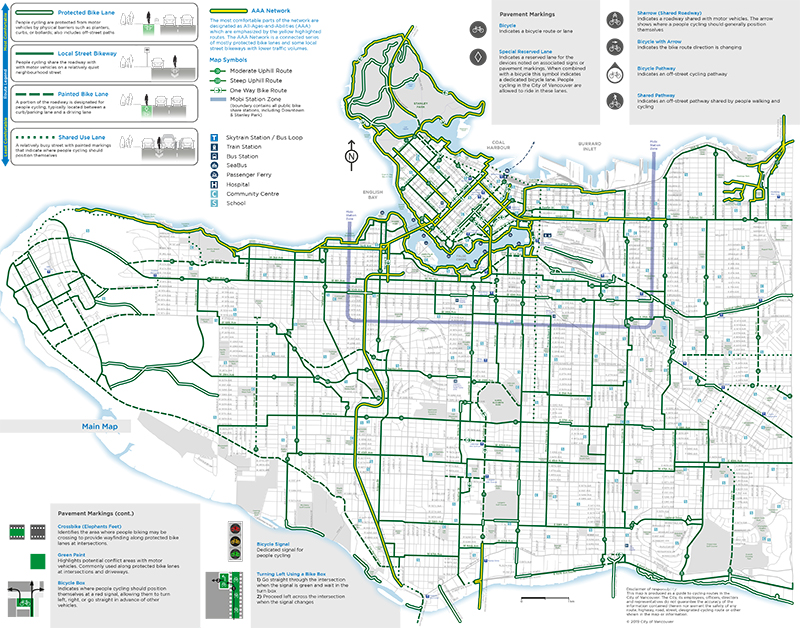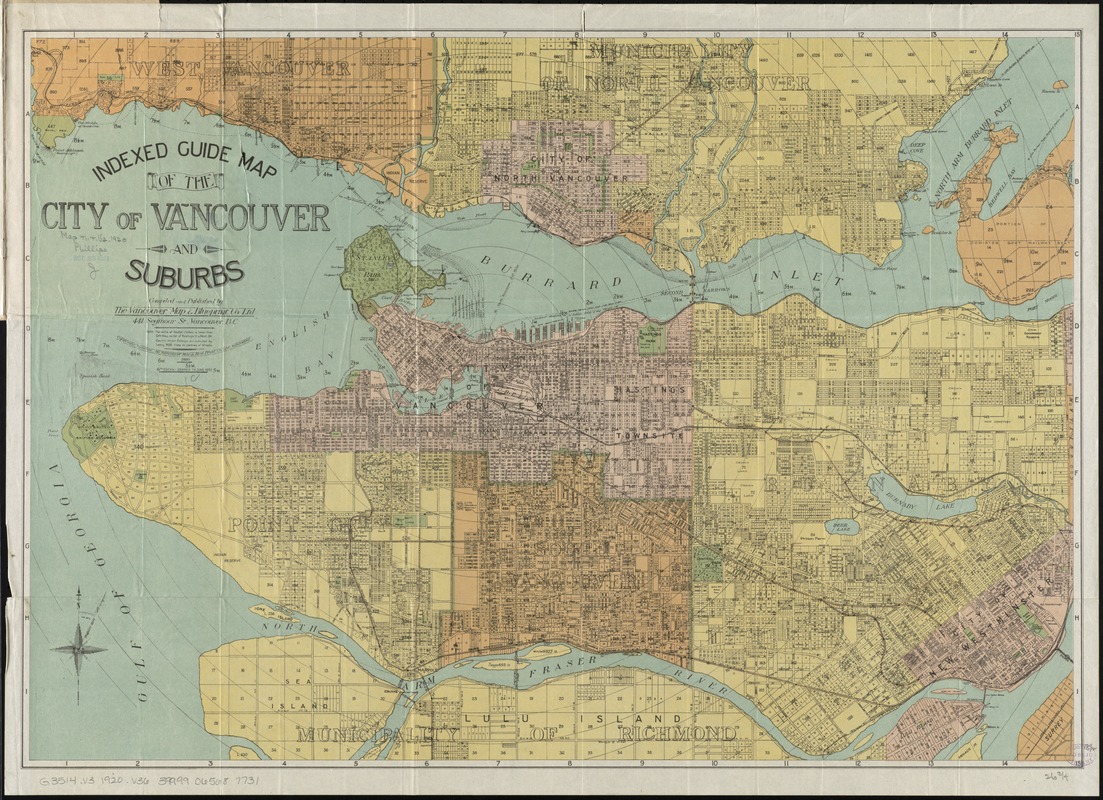Digital vs. Web Maps
The term digital map is used quite often, but what does it mean? Wikipedia describes “Digital Mapping” as “The process by which a collection of data is compiled and formatted into a virtual image.” However, there are some crucial distinctions between digital maps and web maps.
Digital Maps
A digital map is a map that was somehow derived from a computer. Sometimes we use this term to refer to paper maps which are scanned and reformatted into digital images, like this old map of Vancouver:
More commonly, we use this term for “born digital” maps like this cycling map from the City of Vancouver. This map was likely constructed with geospatial data and a Geographic Information System (GIS), and published as a PDF (although there are some paper copies out there). It visualizes cycling infrastructure at a static scale and dimension.

Front of City of Vancouver Cycling 2019 Map
Web Maps
Web maps are a means of dynamically and interactively visualizing geospatial data. Geospatial data, or simply spatial data, is data that includes stored geographic information, such as coordinates. Technically, a web map is a type of digital map since it is derived from a computer. However, there are some important differences:
- Dynamic scales and content Web maps are not static images. Different scales display varying levels of detail. For instance, zooming in may reveal information that wasn’t apparent before. For this reason, web maps are not designed for print.
- Interactive Web maps are built to be interacted with by an end user, often in order for the user to explore a dataset and learn something. Take for example Climate Central’s Surging Seas Risk Zone Map. Or, listen to the radio anywhere in the world with radio.garden
- Display real-time data updates Web maps are useful for geovisualizing real-time data like weather. Watch the wind blow across the country.
- Often rely on web and mobile technology Web maps are ubiquitous - we see and use them all the time. For example, Google Maps. For small businesses, web maps are helpful for finding directions. For app builders, web maps might provide a method for routing to locations using a mobile device’s geolocation features. For researchers, they may help communicate important information in an area of study. For journalists, they may give spatial context to a story like where Amazon locates its warehouses and why.
View workshop content in GitHub
Loading last updated date...
